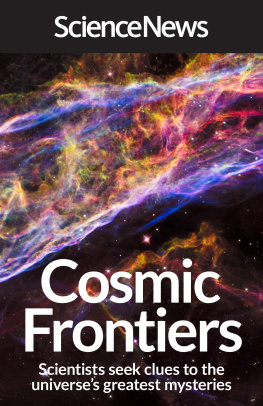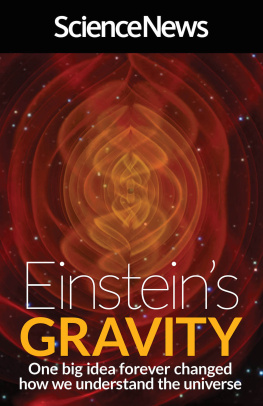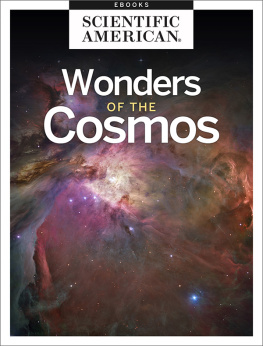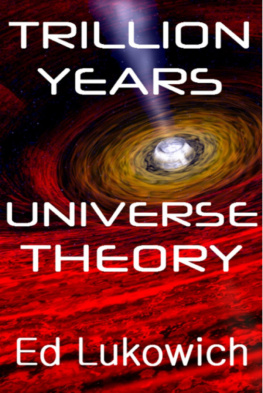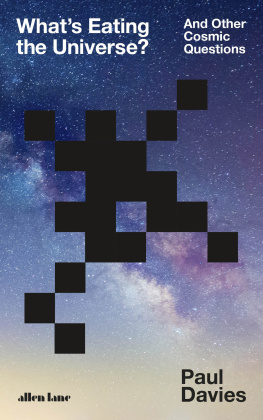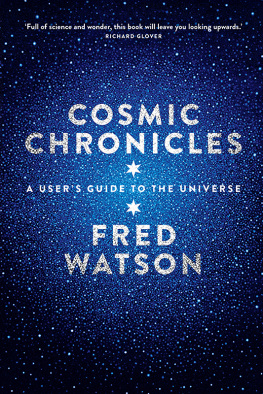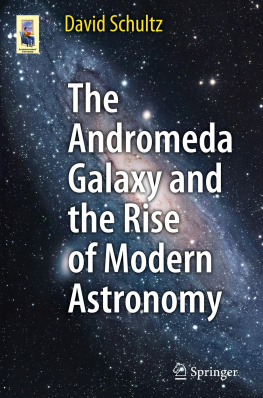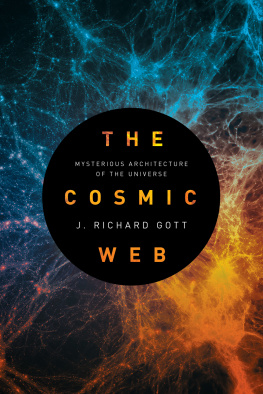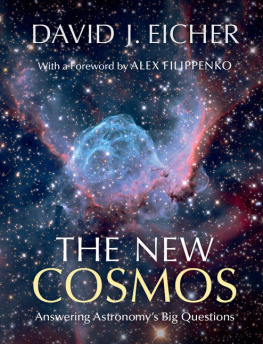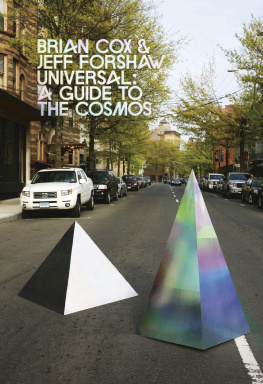Connect with Diversion Books
Connect with us for information on new titles and authors from Diversion Books, free excerpts, special promotions, contests, and more:
Cosmic Frontiers
Scientists seek clues to the universes greatest mysteries
A collection of articles from Science News
Published by Society for Science & the Public
Series Editor: Elizabeth Quill
Copyright
Diversion Books
A Division of Diversion Publishing Corp.
443 Park Avenue South, Suite 1008
New York, NY 10016
www.DiversionBooks.com
Copyright Science News
All rights reserved, including the right to reproduce this book or portions thereof in any form whatsoever.
For more information, email
First Diversion Books edition August 2016
ISBN: 978-1-68230-844-6
Introduction
A century ago, the cosmos was a cozier place.
Back then most astronomers identified the universe as a vast collection of stars restricted to membership in the Milky Way galaxy. Some smudgy spots on the night sky hinted otherwise, though. Cloudlike blobs called nebulae, some experts argued, actually contained additional vast stellar populations, just like the Milky Way but at too great a distance for telescopes to discern those individual stars. Others scoffed at the notion that the universe was anything more than the Milky Way itself.
In 1924, though, Edwin Hubble established that one such nebula, named Andromeda, resided far outside the Milky Ways boundaries. Suddenly the expanse of the universe was dramatically enlarged. And modern cosmologythe scientific study of the cosmoswas born.
Just a few years later, Hubble found smoking gun evidence for an even more surprising astronomical phenomenon: the expansion of the universe. Extragalactic nebulaeeventually to be referred to as galaxiesrushed apart from one another at astounding speeds. And the farther apart they were, the faster they receded from one another. Only a wholesale cosmic expansion could explain those motions. Combined with Einsteins fairly new general theory of relativity, Hubbles discovery of the expansion of space led to the Big Bang theory, still today the framework in which cosmic phenomena are studied and explained.
Over the decades following Hubbles discovery, many new mysteries arosesome soon resolved, others enduring. In the 1930s, astronomers noticed galactic motions that visible matter could not explain. Some additional gravitational influence was at work, presumably in the form of invisible dark matter, the identity of which remains unknown to this day. In the 1960s, quasars astonished astronomers with their brightness, beaming signals across space from the far reaches of the visible universe. And then small, dense stellar corpses known as neutron stars signaled their presence with periodic radio pulses at first suspected of being messages from aliens. Such pulsars turned out to be common throughout space, as did a more extreme version of stellar corpse: the cosmic bottomless pits known as black holes. (It turned out that the gravitational power of supermassive black holes explained the mystery of the quasars brightness.) Further explorations with ever better telescopes and observatories, on the ground and in space, detected the products of energetic cosmic phenomena: cosmic rays (some with inexplicably high energies), bursts of gamma rays, high-energy neutrinos and most recently gravitational waves.
Meanwhile, the Big Bang theory evolved and extended its scope. Calculations showed how heat during the Big Bangs first minutes cooked up the lightest of the chemical elements, explaining their relative abundances in the universe today. Other Big Bang math forecast the presence of a cold glow of microwaves permeating all of space. In 1964 the discovery of that glow, known as the cosmic microwave background radiation, cemented the validity of the Big Bang scenario, establishing its superiority to other theories.
But the standard Big Bang theory didnt explain everything. Observations deep into space suggested a uniform distribution of galaxies on the largest distance scales. Such uniformity defied explanation until 1980, when Alan Guth proposed a rapid burst of postBig Bang expansion that he called inflation. Such an inflationary epoch would have smoothed out any wrinkles in the original distribution of matter, explaining todays large-scale uniformity. But inflation in turn implied other mysteries. For one, it implied a density of matter and energy in the universe much greater than measurements suggested. Only much later did astronomers find that missing density in the form of dark energy, a repulsive presence driving space to expand at an accelerating rate. Inflation further implied the possibility of parallel universesa multitude of cosmic bubbles created in a similar way, collectively referred to as the multiverse.
With the arrival of the 21st century, observations of distant exploding stars and precision measurements of the cosmic microwave background have transformed the picture of the one universe we know from a crude caricature to a detailed portrait, complete with a precise set of vital statistics. But still everything does not quite fit. Nobody knows, for instance, what dark energy really is. And more confounding, its density is vastly lower than theoretical calculations predicted.
So today an army of astronomers, astrophysicists, cosmologists and particle physicists continue to wage their never-ending effort to wrestle even more secrets from space. Its an ambitious undertakinga quest to solve the remaining mysteries, answer the outstanding questions and build a model of the cosmic architecture that captures the essence of the entirety of physical reality. That task may not soon be completed. But the discoveries of the century just past have provided a pretty good start.
Tom Siegfried, Managing Editor, Science News
CHAPTER 1
Black Holes
A book about the cosmos could begin in any number of ways. It could begin in the beginning, with the first chapter focused on the Big Bang, the sudden explosion of the universe from a very hot and dense initial state into what would become the cosmos we know today. It could begin with the most visible features of that cosmos, the stars and galaxies. Or it could begin with a nod to dark energy, acknowledging that this still mysterious entity makes up the majority of the mass and energy content of the universe.
All of those topics are covered in the pages that follow. But in compiling this collection, we decided to start somewhere else: with black holes. Predicted by Einsteins general theory of relativity a century ago, with solid observational evidence arriving in the 1990s, black holes are now on the verge of revealing their deepest secrets. As early as this year, the Event Horizon Telescope is expected to take the first ever images of the bright ring of gas surrounding a black hole, its accretion disk. Researchers are also making theoretical inroads in their understanding of what happens when a person, or particle, falls into a black hole. By studying the event horizon through both theory and observation, scientists could soon figure out how the universe began, how it evolved and even predict its ultimate fate, Andrew Grant writes in The mysterious boundary, which appears in this chapter.

